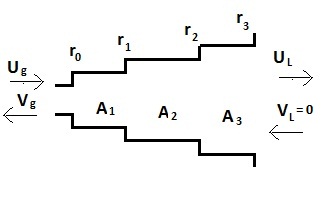| Line 1: | Line 1: | ||
[[Category:HW10ECE438F13]][[Category:HW10ECE438F13]][[Category:HW10ECE438F13]][[Category:HW10ECE438F13]][[Category:HW10ECE438F13]][[Category:HW10ECE438F13]] | [[Category:HW10ECE438F13]][[Category:HW10ECE438F13]][[Category:HW10ECE438F13]][[Category:HW10ECE438F13]][[Category:HW10ECE438F13]][[Category:HW10ECE438F13]] | ||
| + | |||
| + | =solution of [[HW10ECE438F13|Homework 10]]= | ||
| + | [[ECE438]] Fall 2013 | ||
| + | ---- | ||
== Question 1 == | == Question 1 == | ||
| Line 335: | Line 339: | ||
c) We can change the area of each segments. In this way,<math>r_k</math> will change , thus the root of the denominator of V(Z) is changed, which determines the location of formants. | c) We can change the area of each segments. In this way,<math>r_k</math> will change , thus the root of the denominator of V(Z) is changed, which determines the location of formants. | ||
| − | + | ---- | |
| + | Unfortunately, this solution is wrong. Can anybody post a correction below? First student who posts a correct solution will get 1% bonus. Comments and questions are welcome too. -pm | ||
| + | ---- | ||
| + | ==Discussion/corrections== | ||
| + | *The expression for the transfer function is incorrect. First off, there are three tubes the air must go through, and so the top should represent a time delay by 3 time units. (<math>z^{-3}</math>). | ||
| + | *Here is an easier and cleaner way to create matrices in latex. (Look at the source code of the page to copy and paste.) | ||
| + | :: <math>\left( \begin{array}{ccc} 1&2&3\\ 4&5&6\\ 7&8&9\end{array} \right) </math> | ||
[[HW10ECE438F13 | Back to HW10ECE438F13 ]] | [[HW10ECE438F13 | Back to HW10ECE438F13 ]] | ||
Revision as of 07:34, 15 November 2013
solution of Homework 10
ECE438 Fall 2013
Question 1
(a)
|
= | $ \begin{align} \frac{1}{1+r_0} \\\end{align} $ |
|
$ \begin{align} Z^{1/2} \\\end{align} $ |
|
$ \begin{align} \frac{1}{1+r_1} \\\end{align} $ |
|
$ \begin{align}Z^{1/2} \\\end{align} $ |
|
$ \begin{align} \frac{1}{1+r_2} \\\end{align} $ |
|
$ \begin{align}Z^{1/2} \\\end{align} $ |
|
$ \begin{align} \frac{1}{1+r_3} \\\end{align} $ |
|
|
| = | $ \begin{align} \frac{Z^{3/2}}{\pi_{k=0}^{3}(1+r_k)} \\\end{align} $ |
|
$ \begin{align} U_L \\\end{align} $ |
| = | $ \begin{align} \frac{Z^{3/2}}{\pi_{k=0}^{3}(1+r_k)} \\\end{align} $ |
|
$ \begin{align} U_L \\\end{align} $ |
| $ \begin{align} V(Z) \\\end{align} $ | = | $ \begin{align} \frac{U_L}{U_g} \\\end{align} $ | = | $ \begin{align} \frac{\pi_{k=0}^{3}(1+r_k)Z^{-3/2}}{1+(r_0r_1+r_1r_2+r_2r_3)Z^{-1}+(r_0r_1r_2r_3+r_0r_2+r_1r_3)Z^{-2}+r_0r_3Z^{-3}}\\\end{align} $ |
b) From the transfer function, we can see that there are three poles. If the poles are all real, there are three formants.
If one pole is real and the other are complex pole pair, there are two formants.
c) We can change the area of each segments. In this way,$ r_k $ will change , thus the root of the denominator of V(Z) is changed, which determines the location of formants.
Unfortunately, this solution is wrong. Can anybody post a correction below? First student who posts a correct solution will get 1% bonus. Comments and questions are welcome too. -pm
Discussion/corrections
- The expression for the transfer function is incorrect. First off, there are three tubes the air must go through, and so the top should represent a time delay by 3 time units. ($ z^{-3} $).
- Here is an easier and cleaner way to create matrices in latex. (Look at the source code of the page to copy and paste.)
- $ \left( \begin{array}{ccc} 1&2&3\\ 4&5&6\\ 7&8&9\end{array} \right) $


